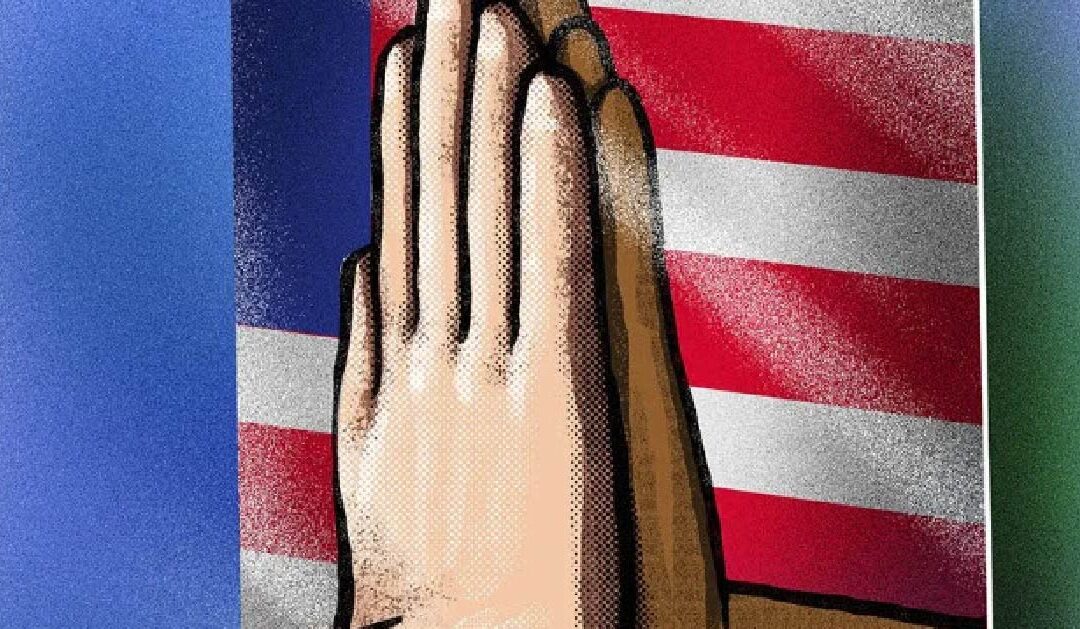This article was originally published in Profectus Magazine.
In these polarized times, people are regularly encouraged to think about differences between groups. Social commentators expound on the differences between conservatives and liberals, religious and non-religious individuals, older and younger generations, urban and rural dwellers, and so on. What is too often lost in these analyses is an appreciation for the fact that people across groups are often more similar than they are different. This fact isn’t trivial. In order to bring people together to solve big problems, it is vital that we unite around the commonalities that connect us.
Our fixation with differences doesn’t just reduce our awareness of similarities, it often leads us to inaccurate beliefs. Consider, for example, research indicating that both Democrats and Republicans overestimate the percentage of people in a political party who belong to party-stereotypical groups. When asked how many Democrats are atheist or agnostic, Republicans estimated 36 percent when the actual number is around 9 percent. Even Democrats over-estimated this number to be 25 percent. And when asked how many Republicans make $250,000 or more a year, Democrats estimated 44 percent when the actual number is around 2 percent. Republicans also over-estimated this number to be 33 percent.
The tendency to overemphasize differences and neglect similarities between groups of people is not merely a media phenomenon or the result of current political conflicts. It is a regular feature of the scholarly disciplines that focus on human mental, social, and cultural life. Much research reported in the behavioral and social sciences is biased towards documenting and discussing differences.
Researchers measure or manipulate variables and look for statistically significant differences between groups. These groups can be based on a wide range of characteristics but regardless of how the group is defined or created, the goal is often the same: to find and report statistically significant differences. This approach often makes sense for testing specific hypotheses and developing a richer understanding of the diversity and complexity of humans, but it can also prejudice how academics and the public think about people, leading us all to view members of different groups as far more distinct from one another than they really are.
In a series of studies published in the Journal of Personality and Social Psychology, psychologists Paul Hanel and Gregory Maio from the University of Bath and Antony Manstead from Cardiff University documented how this bias occurs and can influence the way we perceive groups. Using large international data sets, the researchers compared groups of people in the categories of gender, age, education, income, nationality (sixty countries), and religious denomination on a range of human values and social attitudes.
Like most social science research, their analyses found statistically significant differences between groups. But unlike most social scientific research, they utilized statistical techniques that allowed them to quantify the extent to which groups overlap. Using this more complete approach of looking at both differences and similarities, the researchers observed that studies focused only on documenting differences between groups miss a big part of the story. They concluded that “in the course of making more than 168,000 comparisons, we found that similarities between any two groups of humans generally far outweigh the differences between them.”
As one example, the researchers highlight that a comparison of Americans and Yemenis on a measure of trust in science reveals a statistically significant difference such that Yemenis score significantly higher on trust in science than Americans, despite the fact that the two groups are actually more similar than they are different on this variable; the groups had an eighty percent overlap. If researchers or media outlets only mentioned that Yeminis have a significantly higher trust in science than Americans, it would be easy for people to imagine these groups as more divided in their trust in science than they are in reality.
Illustrating this point, in follow-up experiments, the researchers found that presenting the same data in different ways can influence the extent to which people have an accurate appreciation of similarities. When people are shown graphs that highlight the overlap between groups on a particular variable, as opposed to the types of bar graphs often used that emphasize differences, they more accurately perceive similarities.
It is also important to keep in mind that the loudest voices that make us feel like a hopelessly divided people often only represent a small segment of the population. For example, when Pew Research Center examined political content on Twitter, they found that 10 percent of users were responsible for 97 percent of tweets discussing national politics. Think about that next time you feel like everyone is too political on Twitter.
And even the most extreme partisan divisions may obscure underlying psychological similarities between individuals on the far left and far right. For decades, many social and behavioral scientists have argued that authoritarianism is largely or only observed on the political right, though this position made little sense to anyone familiar with the history of communism and far-left extremist groups. A new series of studies by Thomas Costella at Emory University and his colleagues to be published in an upcoming issue of the Journal of Personality and Social Psychology confirms with behavioral science data what objective observers of human behavior already understand. Specifically, they found that not only does authoritarianism exist on the political left, but that right- and left-wing authoritarians are psychologically similar in many ways. The researchers observed that both right- and left-wing authoritarianism are characterized by “preference for social uniformity, prejudice towards different others, willingness to wield group authority to coerce behavior, cognitive rigidity, aggression and punitiveness towards perceived enemies, outsized concern for hierarchy, and moral absolutism.”
Most people on the left and right aren’t extremists, but experiences that cause psychological distress make distrust and conflict between groups more likely. When individuals feel anxious or threatened in some way, the psychological defense system kicks in and they tend to become more attracted to over-simplistic us vs. them tribal thinking, which can reinforce the view that people with distinct political, religious, and other worldviews are more different than they are similar. This makes it much harder for people to come together to make progress on important issues. This is one reason why fear and outrage-based media are fueling partisanship. They encourage people to feel threatened and defensive.
The good news is that we can also take advantage of our tribal nature to help bring people together in the service of solving big challenges. We should start by recognizing that even though people are very similar to one another in many ways, it is human nature to gravitate towards groups, think about the world in terms of groups, and favor those they perceive as part of their own group. Despite this inclination, it is important to think about people as individuals, and not just as members of groups. This helps combat some of the negative aspects of our tribal nature. But ultimately, humans can’t stop their brains from group-oriented cognition and motivation.
We should also appreciate that differences between groups, as well as differences between individuals, are often very useful, even if they create tension or make us feel uncomfortable. Distinct backgrounds, experiences, and viewpoints can promote creativity and innovation, and help businesses and other organizations better serve a diverse society. Healthy debate improves our thinking. Conflict can lead to better solutions to complex challenges. Not to mention, the world wouldn’t be very interesting if everyone had the exact same thoughts and opinions. But while appreciating such diversity, it is worth remembering, as Paul Hanel and his colleagues documented in their research, that similarities between groups often far outweigh differences between them.
Critically, we can use group-oriented psychology to connect with different others through what social psychologists refer to as “superordinate group identity.” This is a larger identity that members of distinct groups share. It emphasizes a major similarity that unites people who might otherwise feel like they have little in common.
Take United States politics, for example. Republicans and Democrats often do have strongly opposed views on a number of big issues, and these differences have real implications for how we organize and regulate our society. While still recognizing these differences, Americans should focus more on uniting around a shared positive national identity that transcends political affiliations.
The good news is Americans do, in fact, have a shared positive national identity. During the month of October 2020, my colleagues and I at the Archbridge Institute and the Challey Institute for Global Innovation and Growth asked more than five hundred US adults if they are proud to be American. In our survey, 87 percent of respondents declared they are proud Americans. Importantly, regardless of how we divided people into groups—by political affiliation, race, income, and so on—the vast majority of individuals in every group reported being proud to be American. For example, 99 percent of conservatives, 88 percent of moderates, and 75 percent of liberals indicated being proud to be American. Another recent survey conducted by the Archbridge Institute found that the majority of Americans believe they either have achieved or are on the path to achieving the American Dream. And most Americans also share a similar vision of what the American Dream means; over 80 percent of Americans agree that freedom of choice in how to live and having a good family are essential features of the American Dream.
Despite this encouraging news that comes from surveys of the general American public, a more focused analysis of current college and university students suggests that there are reasons to be concerned about our ability to maintain a superordinate positive American national identity. In the recently released 2021 American College Student Freedom, Progress and Flourishing Survey conducted by the Challey Institute for Global Innovation and Growth and College Pulse, only around 40 percent of liberal/liberal-leaning American college students reported being proud to be American, compared to over 85 percent of conservative/conservative-leaning American college students.
I suspect some will argue that the majority of liberal college students not being proud to be American isn’t something to worry about because they are young and being cynical about patriotism is fashionable among young folks, especially young progressives. Just because they claim to not be proud Americans doesn’t mean they will behave in ways that undermine a common identity with other Americans who hold different political beliefs. Perhaps this is true, but other trends observed in that survey provide more evidence that there is reason for concern.
For example, 75 percent of liberal/liberal-leaning students, but only 31 percent of conservative/conservative-leaning students, indicated that they think students who say something that other students find offensive should be reported to the university. It will be hard to unite young Americans under a common group identity if many of them believe that the appropriate response to being offended is to report their fellow students to university officials. These findings highlight a need for our institutions of higher education to work harder at cultivating a climate on college campuses in which students with diverse views and experiences are expected to regulate their own social interactions and build trust and connection across different groups.
American colleges and universities also appear to be failing to inspire students with the type of optimism and personal agency that are critical for bringing diverse Americans together to solve big challenges and advance the cause of human progress. For example, the 2021 American College Student Freedom, Progress, and Flourishing Survey also found that a minority of both liberal/liberal-leaning (22 percent) and conservative/conservative-leaning (26 percent) students feel optimistic about the future of the United States based on what they have learned in college. And just over 40 percent of both groups (43 percent of liberal/liberal-leaning and 42 percent of conservative/conservative-leaning) reported that they are optimistic about their ability to make a difference in the world based on what they have learned in college.
If anything, American institutions of higher education may be pushing students away from the type of shared positive national identity that can help unite citizens with diverse beliefs, experiences, and backgrounds. In the survey, both liberal/liberal-leaning and conservative/conservative-leaning students were more likely to report that their college classes and academic activities had changed their view of the United States to be more negative than positive. Only 7 percent of liberal/liberal-leaning students and 18 percent of conservative/conservative-leaning students indicated that their college classes and other academic activities have given them a more positive view of the United States, whereas 55 percent of liberal/liberal-leaning students and 30 percent of conservative/conservative-leaning students indicated that their college classes and other academic activities have given them a more negative view of the United States.
American colleges and universities may also be failing to teach students about the reality of human progress around the world, which may be part of the reason many students aren’t optimistic about the future or their own ability to make a difference. Specifically, students were asked to indicate, based on what they have learned in college so far, if they believe the world has been getting better or worse over the last fifty years on issues such as extreme poverty, hunger, and literacy. Only about half of liberal/liberal-leaning and conservative/conservative-leaning students responded with the correct answer that the world has been getting better regarding such issues. And only 45 percent of students across political groups indicated believing that the United States has been getting better, based on what they have learned in college. If you also think the world hasn’t been making progress on these challenges, I recommend you spend some time at humanprogress.org.
Media, politicians, and even the academic institutions that have helped so many improve their lives and the lives of their families are making it harder for us to see and emphasize the similarities and shared identities that unite us as Americans, and as humans. As free individuals, we are responsible as well. The differences that divide us are often very real. But if we want to make the world a better place not just for ourselves, but also for future generations, it would be wise for us to focus more on what unites us and to insist that the institutions and political leaders that answer to us do the same.



